

Obituaries on this page originally appeared in For Your Eyes Only #26 in 1991.
MAURICE BINDER, 72, creator of the famous main title sequences for the James Bond movies, died April 9 in London of lung cancer. He was an advertising artist at Columbia Pictures before moving into title work on “Damn Yankees” and “Indiscreet” for producer-director Stanley Donen. His main titles for Donen’s 1960 film “The Grass Is Greener,” showing playful babies under the stars’ names, brought the offer from Harry Saltzman and Cubby Broccoli to design the opening titles for the first Bond film, “Dr. No.”
Binder often said he came up with the famous opening — shooting down a gun barrel that tracks Bond across the screen until he whirls and fires at the camera — in about 15 minutes the morning he was scheduled to meet with Saltzman and Broccoli. Making it work was more difficult; photographing the inside of a real gun barrel proved impossible to focus until someone suggested using a pinhole camera to stop down the exposure more than any lens could. The result was such a hit that it became the trademark opening of every Bond film (though Binder reshot it a number of times as the actors playing Bond changed and the films switched from Panavision to flat shooting).
After working on “Dr. No,” Binder skipped “From Russia With Love” and “Goldfinger.” He returned on “Thunderball” and designed the titles for every Bond since. He also created the trailers for the Bond pictures. His title sequences appeared in many other films, including “Charade,” “The Mouse That Roared,” “Arabesque,” “Repulsion,” “Billion Dollar Brain,” “The Private Life of Sherlock Holmes,” “The Battle of Britain,” “The Last Emperor” and “The Sheltering Sky.”
WILFRID HYDE-WHITE, 87, British character actor whose greatest success came as Colonel Pickering in the film version of “My Fair Lady,” died May 6. Veteran of American and British stage and films since the 1920s, Hyde-White also appeared in “The Third Man,” “The Browning Version” and many memorable TV guest shots. He had a brief turn as Martin Peyton in Peyton Place, played Dr. Goodfellow during the second season of Buck Rogers, and was a smash as the dotty head of a Wall Street law firm in The Associates.
DAVID LEAN, 83, Oscar-winning director of “The Bridge on the River Kwai” and “Lawrence of Arabia,” died April 16. A perfectionist who completed only 16 films in a four-decade career, Lean’s impressive body of work also included “Great Expectations,” “Brief Encounter,” “Oliver Twist,” “Dr. Zhivago” and “A Passage to India.”
JOHN CHARLES DALY, 77, host of What's My Line, died Feb. 24. He was equally well known as ABC’s evening news anchorman from 1953 to 1960. What's My Line was the longest-running game show on TV, appearing on CBS every Sunday night at 10:30 from 1950 until 1967.
GEORGE GOBEL, 71, died Feb. 24. He was a sensation on TV in the early ’50s, and soon had his own variety series (1954-1960). He moved on to numerous guest shots, including a few dramatic turns, before settling in as a regular panelist on The Hollywood Squares. He was also a frequent Tonight Show guest and was a regular on NBC's Harper Valley PTA series.
JEAN ROGERS, 74, actress best known as Dale Arden opposite Buster Crabbe’s Flash Gordon, died Feb. 24. Soon after her arrival in Hollywood she was cast in Universal’s first “Flash Gordon” serial in 1936, and reprised her role in 1938’s “Flash Gordon’s Trip to Mars” (Dale was played by Carol Hughes in the third and last serial, “Flash Gordon Conquers the Universe”). She went on to dozens of feature and serial roles before retiring in 1951.
RICHARD THORPE, 95, film director whose career spanned the silent era through the ’60s, died May 1. Based at MGM for years, his pictures included “Huckleberry Finn,” “The Thin Man Goes Home,” “Jailhouse Rock” and Johnny Weissmuller starrers “Tarzan Escapes,” “Tarzan Finds a Son,” “Tarzan’s Secret Treasure” and “Tarzan’s New York Adventure.” Survived by his son, producer-director Jerry Thorpe.
DON SIEGEL, 78, veteran director of such landmark pictures as “Invasion of the Body Snatchers” and “Dirty Harry,” died April 20. His four-decade career ranged from the Elvis Presley western “Flaming Star” to John Wayne’s last film, “The Shootist,” and Ronald Reagan’s final bow, “The Killers” (shot for TV but released to theaters when it was deemed too violent for the home screen) to episodes of The Twilight Zone.
WILLIAM DOZIER, 83, movie and television producer whose biggest hit was the Batman TV series, died April 23. After producing stints at several studios in the 1940s, Dozier joined CBS in 1951 to supervise the network’s drama series, first in New York then in Hollywood. From 1959 to 1964 he was in charge of production at Screen Gems, overseeing dozens of series. He then settled his Greenway Productions at 20th Century-Fox, producing Batman, The Green Hornet and the quickly cancelled Tammy Grimes Show, all for ABC.
MORTON FINE, 74, died March 7. With his late partner, David Friedkin, Fine produced and frequently wrote I Spy during its three-season run. Teamed since the early ’50s, Fine and Friedkin were film and TV veterans when they wrote the pilot for I Spy and were tapped to produce the series in 1965. They were Oscar nominees for scripting “The Pawnbroker” the same year. Later scripts included “The Greek Tycoon,” “Caboblanco” and episodes of Kojak and Police Story.
KEN CURTIS, 74, actor best known as Festus Haggen on Gunsmoke, died April 28. Originally a singer with Tommy Dorsey’s band, he broke into movies as a member of the Sons of the Pioneers, Roy Rogers’ singing group. He appeared in “Mr. Roberts,” “The Alamo,” “How the West Was Won” and dozens of TV episodes. Curtis co-starred in the Ripcord syndicated series from 1961 to ’63. In 1964 he joined Gunsmoke as Marshal Matt Dillon’s new deputy (after Dennis Weaver left the show), remaining with the series until it ended in 1975. In 1983 he appeared in the modern western cum soap opera The Yellow Rose.
ARTHUR MURRAY, 95, the world’s most famous dance instructor, died March 3. His ubiquitous mail-order dance lessons and chain of dance schools made him a wealthy man by the 1920s, and he was immortalized in the popular song, “Arthur Murray Taught Me Dancing in a Hurry.” The Arthur Murray Party, hosted by wife Kathryn with Arthur instructing guests and viewers on the latest steps, started on ABC-TV in July 1950, moved to DuMont, then served as a perennial summer replacement show on NBC and CBS, finally going off the air in September 1960 after two full seasons on NBC.
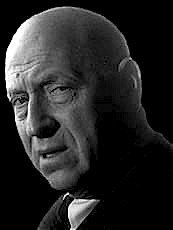
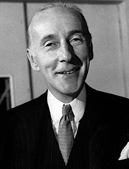
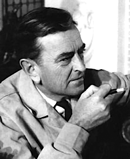
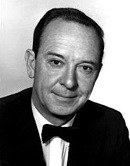


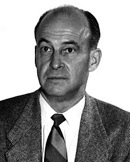
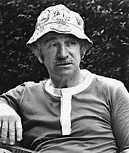

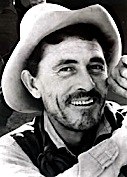

Not pictured:
Morton Fine

